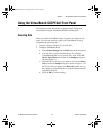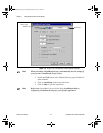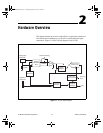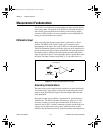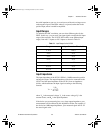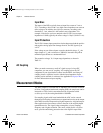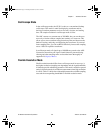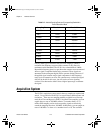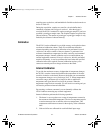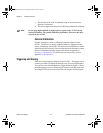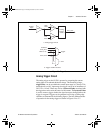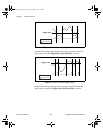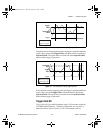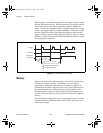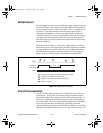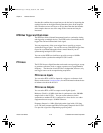
Chapter 2 Hardware Overview
©
National Instruments Corporation 2-7 NI 5911 User Manual
sampling rates, resolutions, and bandwidth for flexible resolution mode are
shown in Table 2-2.
During the acquisition, samples are stored in a circular buffer that is
continually rewritten until a trigger is received. After the trigger is
received, the NI 5911 continues to acquire posttrigger samples if you have
specified a posttrigger sample count. The acquired samples are placed into
onboard memory. The number of posttrigger or pretrigger samples is only
limited by the amount of onboard memory.
Calibration
The NI 5911 can be calibrated for very high accuracy and resolution due to
an advanced calibration scheme. There are two different calibration
schemes depending on the type of calibration to be performed. Internal
calibration, the more common of the two schemes, is performed via a
software command that compensates for drifts caused by environmental
temperature changes. Internal calibration can be executed without any
external equipment connected. External calibration, which is performed
much less frequently, is used to recalibrate the board when the specified
calibration interval has expired. External calibration requires you to
connect an external precision voltage reference to the board.
Internal Calibration
To provide the maximum accuracy independent of temperature changes,
the NI 5911 contains a heater that stabilizes the temperature of the most
sensitive circuitries on the board. However, the heater can accommodate
for temperature changes over a fixed range of ±5 °C. When temperatures
exceed this range, the heater will no longer be able to stabilize the
temperature and signal data will no longer be accurate. When the
temperature range has been exceeded, you will receive a warning and you
will need to perform an internal calibration.
By executing a software command, you can internally calibrate the
NI 5911without connecting any external equipment.
Internal calibration performs the following operations:
1. The heater is set to regulate over a range of temperatures centered at
the current environmental temperature. The circuit components require
a certain amount of time to stabilize at the new temperature. This
temperature stabilization accounts for the majority of the calibration
time.
2. Gain and offset are calibrated for each individual input range.
CBIHWum.book Page 7 Thursday, October 29, 1998 1:56 PM



